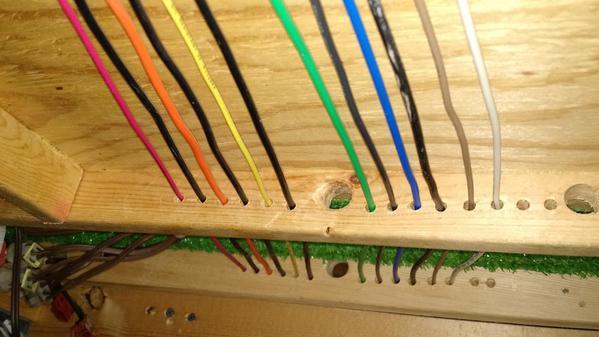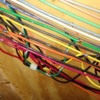Lets see...
1. The under side of the rail is spread apart momentarily with a screw driver and the bare, tinned end of the feeder wire is inserted in the gap. Screwdriver is removed and heat is applied to reflow the solder.
I think this would be best/easiest, as you're effectively using the rail as a third hand to hold the wire in place. It isn't going to make any better of a connection than soldering without the wire pinched in the rail, but may make it easier to get a good solder connection in the first place. I think you'll probably need to add more solder than just the tinned end of the wire holds.
2. Similar, except a ring or spade terminal is applied to the feeder wire and inserted in the gap. Solder then applied to terminal/ track.
I don't see any point in this method. If you are using a crimp on connector on the wire, there isn't really any point in wasting time making a solid, soldered connection of the terminal to the track, you still have a mechanical connection in the system. and if you are soldering the wire to the connecter as well, you are just adding an extra step. the connector doesn't provide any benefit with a soldered connection. (see my 'method 4'' below).
3. The wire is attached to the side of the rail with solder only.
There is nothing wrong with this one, but hidden wires under the rail tend to look better... because you can't see them. If you've got your track laid down and find you need to add a feed somewhere this is probably the best way to go.
Method 4: this is the non soldered version of 1 and 2 above, and where I think #2 came from in the first place. pry the rail apart enough to poke a wire in and then remove the screwdriver, and the rail will pinch to hold the wire. All of my layouts up to now have used this method with no problems, however on my next build I do plan to do my wiring much neater and to solder the connections. I think the use of connectors on the end comes from this where you can likely bypass needing a screwdriver to pry the rail open, as an o ring or such is sturdy enough to force into the rail. the connector will also hold up better over time than just a wire pinched in the rail as it is much less likely to break from the tight pinching.
JGL








